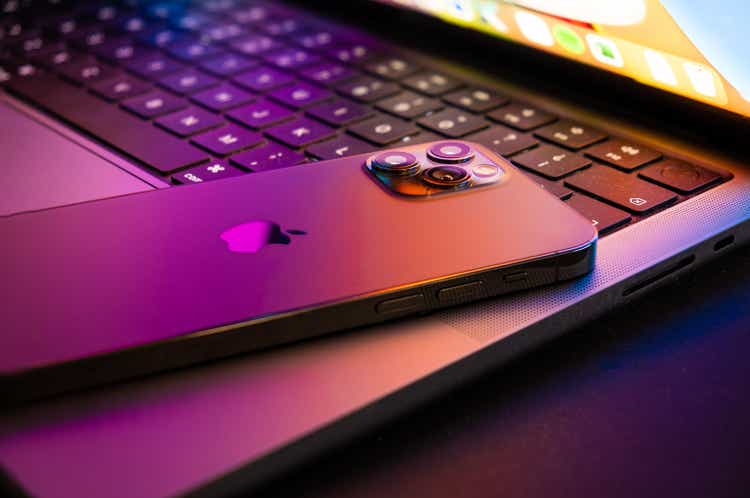
A closer look at the best-selling plugin vehicle OEMs Following the feedback of some readers, this is a more detailed look at the top plugin OEMs in the world, divided across four different articles. In this is the first one, we’ll have a look at SAIC, Leapmotor, Changan, Chery, and NIO. For more information on these OEMs, don’t forget to check out the global top 20 brands for EV sales report .
SAIC Motor, also known as Shanghai Automotive Industry Corporation, is a state-owned manufacturer, based in Shanghai. Being one of the Big Four state-owned manufacturers in China (FAW, Dongfeng, Changan, and SAIC), it has a long history. It was founded in 1955, so it’s a household name in China.

SAIC is a specialist in badge engineering between its different brands, but we can divide them as follows: IM Motors — Luxury EV brand. MG Motors — Export-based fossil fuel vehicle and EV brand, basing part of its sales pitch on its British heritage. Roewe — Mainstream fossil fuel vehicle and EV brand, many of its models rebadged as MGs in export markets.
Rising Auto — BEV upmarket lineup of Roewe. Maxus — Van and pickup truck specialized brand. Has fossil fuel vehicle and BEV models, some of its models are rebadged as MG in some export markets.
It is also known as LDV in Australia and New Zealand. Besides these fully owned brands, SAIC is also part of a number of joint ventures (JV), like SGMW , where it holds 50% of the JV and through it controls the brands Wuling, more focused on value-for-money, and Baojun, which is a more youth-oriented brand. Besides SGMW, SAIC also has JVs with General Motors and Volkswagen Group, in which it makes its foreign partners’ models.
After this lengthy presentation, we can look a bit closer at them. Within the fully owned brands, which represent just 33% of SAIC sales, MG is by far the most relevant in the plugin vehicle (PEV) business, with about 25% of the OEM’s sales. That’s mostly thanks to the MG4, which is responsible for about half the sales of the MG brand.
This highlights a distinctive feature of SAIC. Because of MG’s success in export markets (90% of its sales are made there), SAIC is the only Chinese OEM where a significant share (22%) of its sales are based in export markets, and as such, it is more vulnerable to tariffs in foreign markets. As for the SGMW JV brands, Wuling and Baojun, the former is by far the OEM’s biggest seller, representing 60% of SAIC’s sales, while the latter is a niche brand, with 7% of sales.
Looking at individual models, one of the two biggest sellers is the tiny Wuling Mini EV , a true groundbreaking vehicle that has sold over 1.3 million units since it arrived in 2020, representing 25% of all SAIC sales this year. The other is the Wuling Bingo , a small hatchback that is expected to reach some 220,000 units this year.
Together, they are responsible for 23% of the OEM’s sales! Long story short, while many Chinese OEMs are based around competitively-priced midsize vehicles, SAIC’s success story is based on two cheap, small EVs. Leapmotor is currently one of the hottest Chinese EV startups. It started delivering vehicles in 2019, and it is expected to deliver over 250,000 units this year.
The Hangzhou -based company made a deal with Stellantis in October 2023, with the multinational conglomerate buying a 20% stake in the startup. The joint venture was formed in order to export Leapmotor units to overseas markets, namely in Europe. When it comes to sales, the brand has a pretty balanced lineup, with the midsize SUV C11 being the best seller.
It represenys 30% of total brand sales, followed by the new C10 crossover, with 26% share. All while the older (it was launched in 2020) T03 city car continues to deliver a good number of units, representing 23% of sales. Interestingly, while Leapmotor has a JV with Stellantis focusing on export markets, the truth is that the startup still has less than 1% of sales coming from export markets.
Expect these numbers to be markedly higher in 2025. Changan Automobile is the smaller of the state-owned Chinese manufacturers. It is based in Chongqing, a metropolis not well known outside of China but that is home to 22 million people.
Changan started making vehicles in 1959, so it is a familiar name in China. The Changan OEM has several brands under its umbrella: Changan itself, which is an ICE-based mainstream brand, but also has a few older plugin models. Qiyuan — a new, value-for-money EV brand, with a focus on EREV models.
Deepal (Shenlan) — mainstream EV brand. Avatr — premium EV brand, with Huawei technology and CATL batteries. Besides these fully-owned brands, Changan is also part of a couple of JVs, like Changan–Ford , and Changan–Mazda , where it holds 50% of the JVs.
In this case, we will be focusing on the namesake brand, which is the best-selling make in the group, representing 38% of sales. The other relevant brands in Changan Group are Deepal (29% of sales) and the new brand Qiyuan (24%). The biggest EV seller in the Changan brand is the little city car Lumin , with the car representing the majority of sales of the namesake brand, and 24% of total group plugin sales.
This is another brand with little to no exposure to export markets, with the domestic market representing 99% of its total sales. Chery Automobile is a Chinese OEM based in Wuhu, a two-million-person city in the Anhui province. Chery is owned by the local municipal government.
It was founded in 1997 and is currently the 5 th largest OEM in China, with 1.9 million units sold in 2023. Despite being heavily based on its namesake brand, Chery also has quite a few specialized brands, like: Exeed — Chery’s upmarket brand, which includes the Sterra EV sub-brand, which is currently the pinnacle of Exeed.
Exceed is also a sister brand to Luxeed, sharing platforms, and both were developed in collaboration with Huawei. Luxeed — premium EV brand co-developed and co-owned with Huawei , part of the Chinese technology giant’s HIMA group of brands. Jetour — crossover/SUV based brand, with ICE and plugin options, directed to more rural areas.
iCar — youth EV brand, looks to stand out with innovative marketing and original designs. Karry — commercial vehicle based brand, with ICEV and BEV options. In export markets, we can also count Omoda , Jaecoo , and Exlantix, with the first consisting of rebadged Chery and Exeed models being offered in ICEV and BEV versions.
Jaecoo is an SUV-based brand, thanks to rebadged Chery and iCar models, while Exlantix is the export name of the Sterra EV brand. And ..
. I think I am not forgetting any of Chery’s fully-owned brands. Finally, it has a joint venture with Jaguar Land Rover , where it has a 50% stake.
The main brand is Chery’s namesake brand, which represents 59% of the group’s sales. The role exports play in the OEM’s overall sales is still small (6%), but higher than for most Chinese OEMs. Expect 2025 to bring significant growth in this aspect, especially thanks to the expansion of the Omoda and Jaecoo export brands.
Looking at the best-selling models, Chery was once known for its success in the city car category, but now it has a diversified lineup, with its best sellers being either midsize SUVs ( Chery Fulwin T9 ) or full-size premium sedans ( Luxeed S7 ). NIO Inc. is one of the most media-friendly Chinese startups, having a good deal of coverage outside China.
It is headquartered in Shanghai, and started mass deliveries in 2018. One of its distinctive points is its battery-swapping operations, which serve as an alternative to normal EV charging stations. In the second half of 2024, NIO launched its first daughter brand, Onvo , which will sit below the premium positioning of NIO’s namesake brand.
Onvo is still in its first steps. This year, sales of NIO are heavily based on the ET5 sedan/station wagon, representing 39% of total sales, while the ES6 midsize SUV is right behind, with 38%. Despite having landed in Europe in 2021, exports are negligible, as they represent just 1% of sales.
One can see that SAIC is in a different league compared to the others, but numbers can be deceiving. The influence of the Wuling Mini EV is visible, as the 2021 surge coincided with the city car’s production ramp-up, which shows SAIC’s dependence on its little Mini EV, now helped by the also small Wuling Bingo. In fact, if we were to remove the sales of these two models, SAIC sales would be cut in half, sitting below Changan and at the same level as Chery.
Even more concerning, compared to the rest of the Chinese competition, growth has been slow without taking into consideration its two best sellers, which might hamper future financial results. Changan is experiencing consistent growth, and has its future assured in an EV-based automotive market. Leapmotor and NIO are also growing.
Although, at a lower level, so they still have a few years (two? three?) of hard work ahead in order to scale up and reach The Promised Land . Chery’s sales behavior is interesting. Until 2022, it followed Changan’s sales levels, but afterwards, it changed its business model.
It abandoned its sales model based on small, cheap EVs, and began focusing instead on higher priced models, which allows for more generous profit margins. After the transitional year of 2023, Chery was back on a growth path in 2024, with the added bonus of increased revenue and profit margins. So, expect the EV side of the OEM to be profitable, if not today, then surely in 2025.
CleanTechnica's Comment Policy LinkedIn WhatsApp Facebook X Email Mastodon Reddit.














